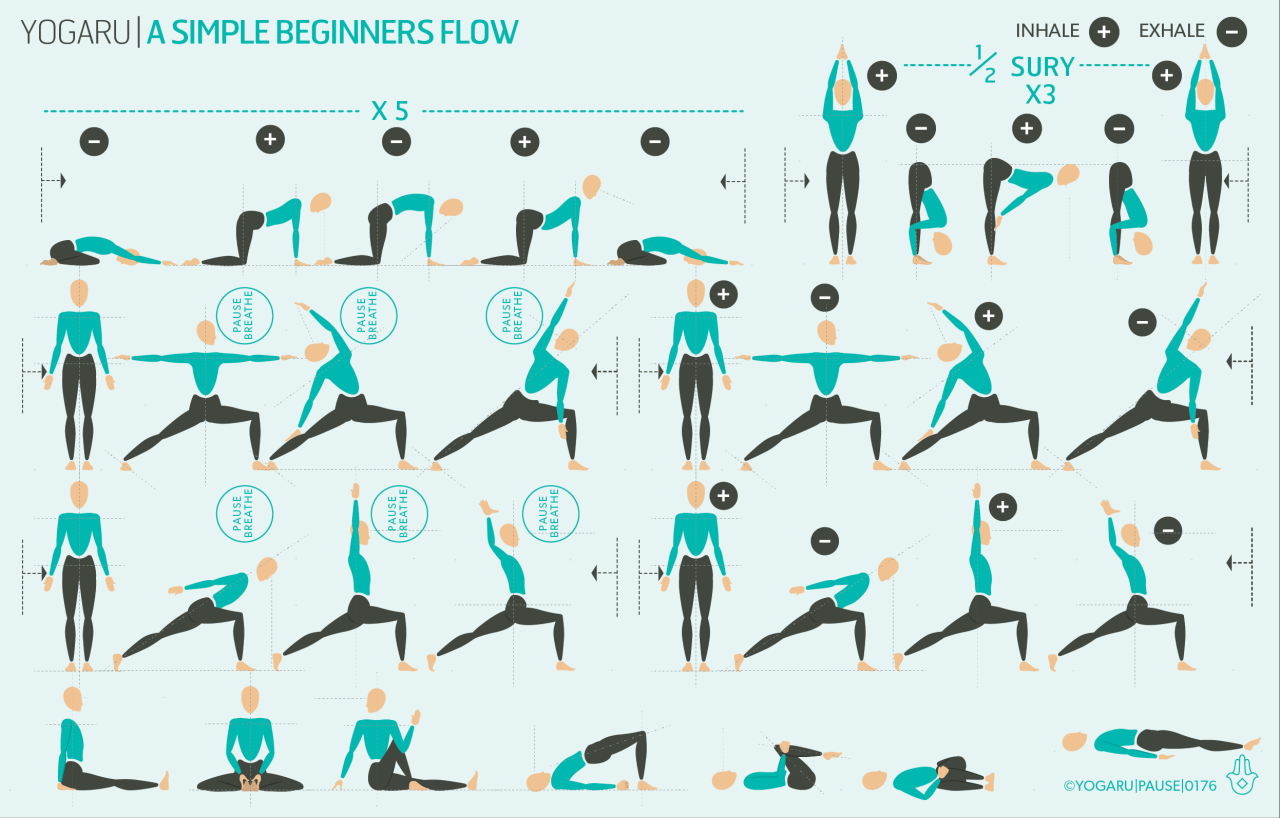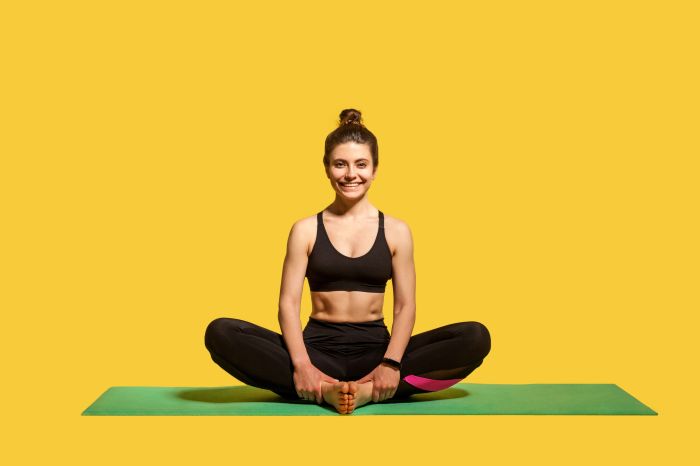Yoga for Beginners sets the foundation for a transformative journey into the world of yoga, offering insights into its benefits and practical tips for starting your practice.
As you delve deeper into this guide, you’ll discover the essence of yoga and how it can positively impact both your mind and body.
Introduction to Yoga for Beginners

Yoga is a mind-body practice that combines physical postures, breathing exercises, and meditation. It is known for its ability to improve flexibility, strength, and overall well-being.
Benefits of Yoga for Beginners
- Physical Benefits:
- Improves flexibility and strength
- Increases balance and coordination
- Helps with posture and alignment
- Mental Benefits:
- Reduces stress and anxiety
- Promotes relaxation and better sleep
- Enhances focus and mental clarity
Basic Yoga Poses for Beginners

Yoga poses, also known as asanas, are fundamental movements that help improve flexibility, strength, and mental clarity. Here are some simple poses suitable for beginners:
Mountain Pose (Tadasana)
- Stand tall with feet hip-width apart, arms at your sides, and palms facing forward.
- Engage your core, relax your shoulders, and gaze straight ahead.
- Breathe deeply and hold the pose for 30 seconds to 1 minute.
- Modifications: Beginners can practice against a wall for support or use a block between the thighs for alignment.
Child’s Pose (Balasana), Yoga for Beginners
- Kneel on the floor, sit back on your heels, and lower your chest between your thighs.
- Extend your arms in front of you with palms facing down.
- Breathe deeply and relax the entire body in this resting pose.
- Modifications: Place a blanket under your knees for extra support or use a bolster under your chest for comfort.
Downward-Facing Dog (Adho Mukha Svanasana)
- Start on your hands and knees, tuck your toes, and lift your hips up and back.
- Straighten your arms and legs, forming an inverted V shape with your body.
- Press your hands into the mat, relax your head between your arms, and breathe deeply.
- Modifications: Bend your knees slightly if hamstrings are tight or practice with hands on blocks for height.
Setting Up a Beginner’s Yoga Routine
Starting a yoga routine as a beginner can be exciting and beneficial for both the mind and body. To see progress and fully experience the benefits of yoga, it’s essential to establish a consistent practice. Here’s a sample weekly yoga routine for beginners along with guidelines on frequency and duration.
Sample Weekly Yoga Routine for Beginners
- Monday: 20-minute gentle yoga flow focusing on breathing and basic poses
- Wednesday: 30-minute session incorporating standing poses and a short relaxation at the end
- Friday: 25-minute yoga session emphasizing balance poses and core strength
- Sunday: 40-minute gentle yoga practice for relaxation and flexibility
Frequency of Practice for Beginners
Beginners should aim to practice yoga at least 3-4 times a week to see progress and build a solid foundation. Consistency is key in developing strength, flexibility, and mindfulness through yoga.
Ideal Duration for Yoga Sessions for Beginners
For beginners, yoga sessions should typically range from 20 to 45 minutes. This duration allows enough time to warm up, practice poses, focus on alignment, and end with relaxation or meditation. It’s important to listen to your body and gradually increase the duration as you become more comfortable with the practice.
Essential Yoga Equipment for Beginners: Yoga For Beginners
When starting out with yoga, it is important to have the right equipment to enhance your practice and ensure safety. Here are some essential yoga props and equipment for beginners:
Yoga Mat
A yoga mat provides cushioning, support, and grip during yoga poses. It is essential for stability and comfort while practicing yoga.
Yoga Blocks
Yoga blocks are used to provide support and stability for beginners who may not be as flexible. They help in achieving proper alignment in poses.
Yoga Strap
A yoga strap is a helpful tool for beginners to extend their reach and improve flexibility in poses that may be challenging. It assists in achieving proper alignment without straining.
Yoga Blanket
A yoga blanket can be used for added cushioning, support, or warmth during relaxation poses or to modify poses for comfort.
Alternative Household Items
If you do not have access to traditional yoga props, you can use household items as alternatives:
- Substitute a yoga mat with a non-slip rug or a soft towel on a non-carpeted floor.
- Replace yoga blocks with books, water bottles, or firm pillows.
- Use a belt or scarf as a substitute for a yoga strap.
- A folded blanket or towel can be used instead of a yoga blanket.
Importance of Proper Equipment
Using the proper yoga equipment can help beginners feel more comfortable, supported, and safe during their practice. It can also enhance the effectiveness of the poses, improve alignment, and prevent injuries. Investing in the right equipment is essential for a successful yoga practice.
